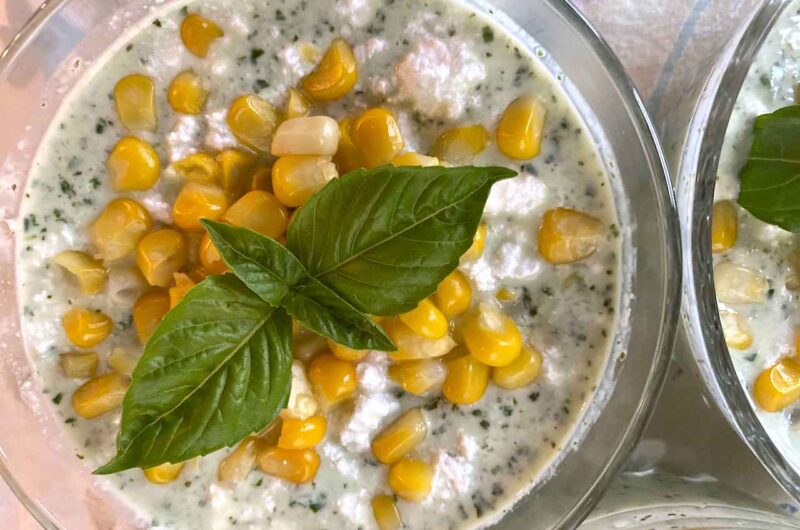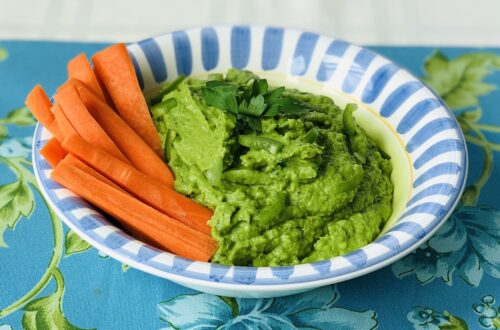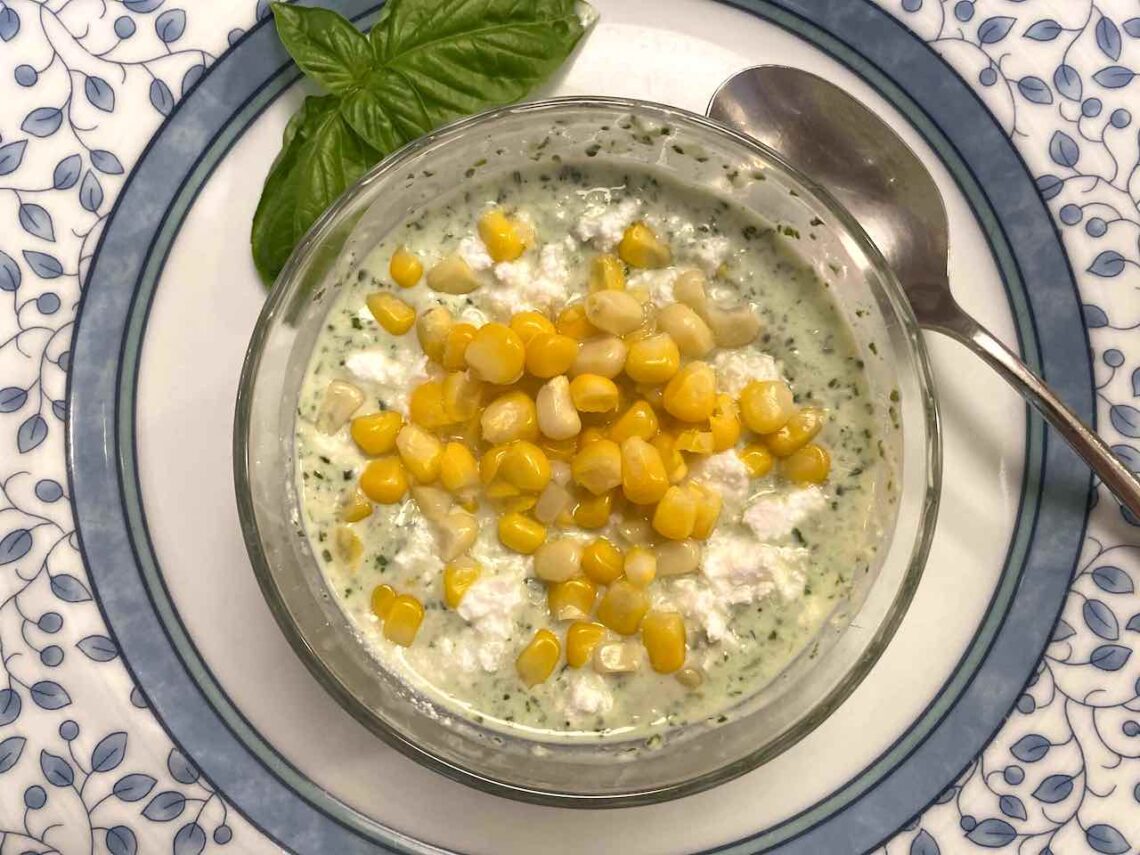
Chilled Cucumber Soup
As August turns to September, I am trying to hold onto summer as much as possible. The pandemic summer has meant long walks and, more importantly, lots and lots of picnics. With picnics the new norm for social events, the type of food I want to eat has expanded. Pre-pandemic, I likely would not have given this recipe a second glance. But the pandemic has made me more adventurous. I have learned to love food processors, appreciate anchovies, and have rethought what portable picnic food includes. Perfect for a picnic or hot night, this recipe is creamy and a little bit spicy, while the corn adds a sweetness to it that matches the cucumber and dairy base. If you’ve spent the summer eating gazpacho and need a new cold soup for September picnics, try this.
This soup, with its yogurt base, is the perfect opportunity to discuss dairy production, including the less appetizing parts of it. (Warning: this post is a bit manure-heavy. Consider reading this at a time when you are not eating.) There are many problems related to dairy production: the low price paid for milk (which squeezes smaller farmers and leads to increased “efficiency,” i.e. larger factory farms), the cycle of breeding cows for dairy production, dairy farming’s environmental impacts, and the low wages paid to a primarily immigrant workforce. While I wish I had space to discuss all of these issues, this post focuses on the environmental impacts – specifically the production of greenhouse gases and the threat of contaminated groundwater from manure.
Having attended college in Vermont, I have long known that cows smell. On campus, if the wind came from a certain direction, it smelled like cows. Despite the smell, in my memory these are happy cows – spotted animals grazing in idyllic pastures. But that memory bears little relation to reality. Most cows are held in small stalls and not allowed to roam on pastures. They spend much of the day standing in their own feces and urine, which can cause health problems – one reason they are fed antibiotics. Since cows only produce milk after giving birth, most farmers artificially inseminate their cows to ensure that they give birth to as many calves as possible to produce as much milk as possible.
Moreover, dairy farms have increased in size over the past forty years, as small farms have been squeezed out of business and large farms have bought them up. In 2000, only 4.5 percent of dairy farms had more than 2,000 dairy cows. By 2016, 35.2 percent did. Currently, half of all dairy cows are on dairy farms that have at least 1000 cows.
Dairy farms are big emitters of greenhouse gases. In fact, dairy cows account for 2 percent of all greenhouse gases produced in the US. They produce methane, nitrous oxide, and carbon dioxide. Some of this comes from the source we all know and laugh about – when cows belch. Much of it comes from manure. According to one estimate, manure from 200 dairy cows produces the same amount of nitrogen as does the sewage from a 5,000-10,000-person town. But additional emissions comes from a source we think less about: the energy needed to produce feed (and its fertilizer) for dairy cows.
In addition to producing greenhouse gases, manure can cause all types of problems if not properly stored and disposed of. According to the World Wildlife Foundation, a typical dairy cow produces 17 gallons of manure and urine per day. A dairy farm with 2,000 cows produces about 240,000 pounds of manure each day – or almost 90 million pounds each year. (Keep in mind that a typical dairy cow weighs between 1,200 and 1,500 pounds and produces over 7.5 gallons of milk per day.)
The problem is what to do with all of this manure. It can be used as fertilizer, which is what some farmers do – often those who both have dairy cows and grow crops. But on large dairy farms, there is often too much manure. Most dairy farms store the manure in lagoons, making responsible management vital to avoid contamination. (Some farmers store it in lagoons while waiting to use it as fertilizer.) If not controlled correctly, manure can run-off into water sources and pollute local communities – something which happens more often than we would like to think. This can be dangerous, since the manure often contains nitrogen and phosphorous, which can create algae blooms in surface water. Manure can also contain E.coli and other pathogens, as well as antibiotics and hormones given to the cows. If the manure is not stored correctly, all of these pathogens and chemicals can seep into groundwater and contaminate drinking water.
I don’t have a real answer for what to do about eating dairy. I love milk in my coffee, yogurt for breakfast, and cheese at any time of day – plus, it’s an efficient source of calcium. But according to an article in The Counter, the five largest meat and dairy companies produce about as many greenhouse gas emissions as the oil company BP. If we really want to save the planet before it’s too late, perhaps we should all become vegans or at least cut down on our dairy consumption. It’s something to think about.
Chilled Cucumber Soup
Course: Appetizer, Side, Soup6
servings20
minutesAdapted from Melissa Clark’s Chilled Cucumber Soup With Avocado Toast.
Ingredients
1 large cucumber, peeled and seeded
2 cups Greek yogurt
1 large garlic clove
2 anchovy fillets
2-3 whole scallions
½ jalapeno, chopped (with or without seeds)
¼ cup fresh mint
¼ cup basil (or other herbs like parsley or cilantro)
½ teaspoon white wine vinegar
¾ teaspoons sea salt
½ cup Feta cheese
1 ear of corn, cooked and shucked with the kernels cut off
1 avocado (optional)
Directions
- In a food processor or blender, mix together the cucumber, yogurt, garlic, anchovies, scallions, half a jalapeño, mint, basil, white wine vinegar, and sea salt. Blend to your desired consistency. (Depending on the size of your food processor or blender, you may have to do this in batches.)
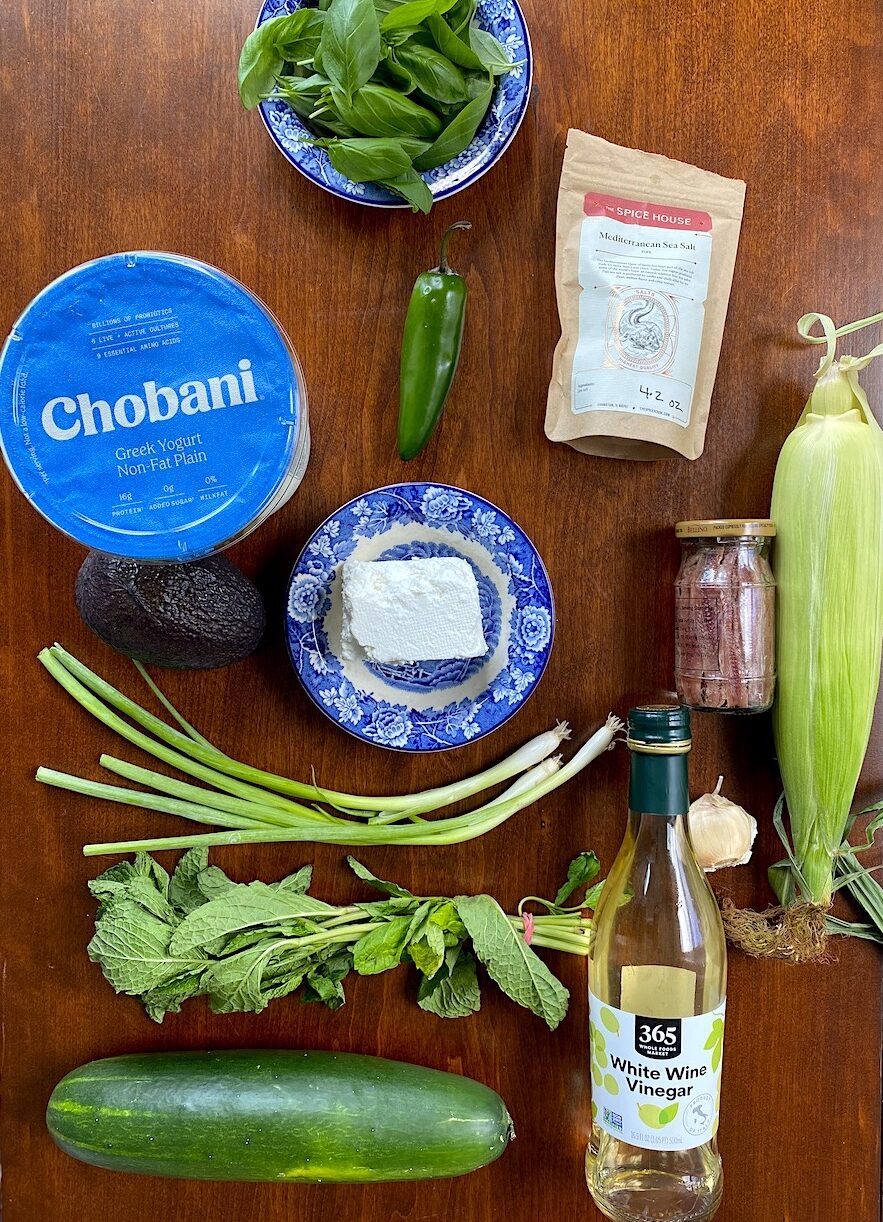
- Serve with a sprinkle of feta cheese and corn, and some slices of avocado.
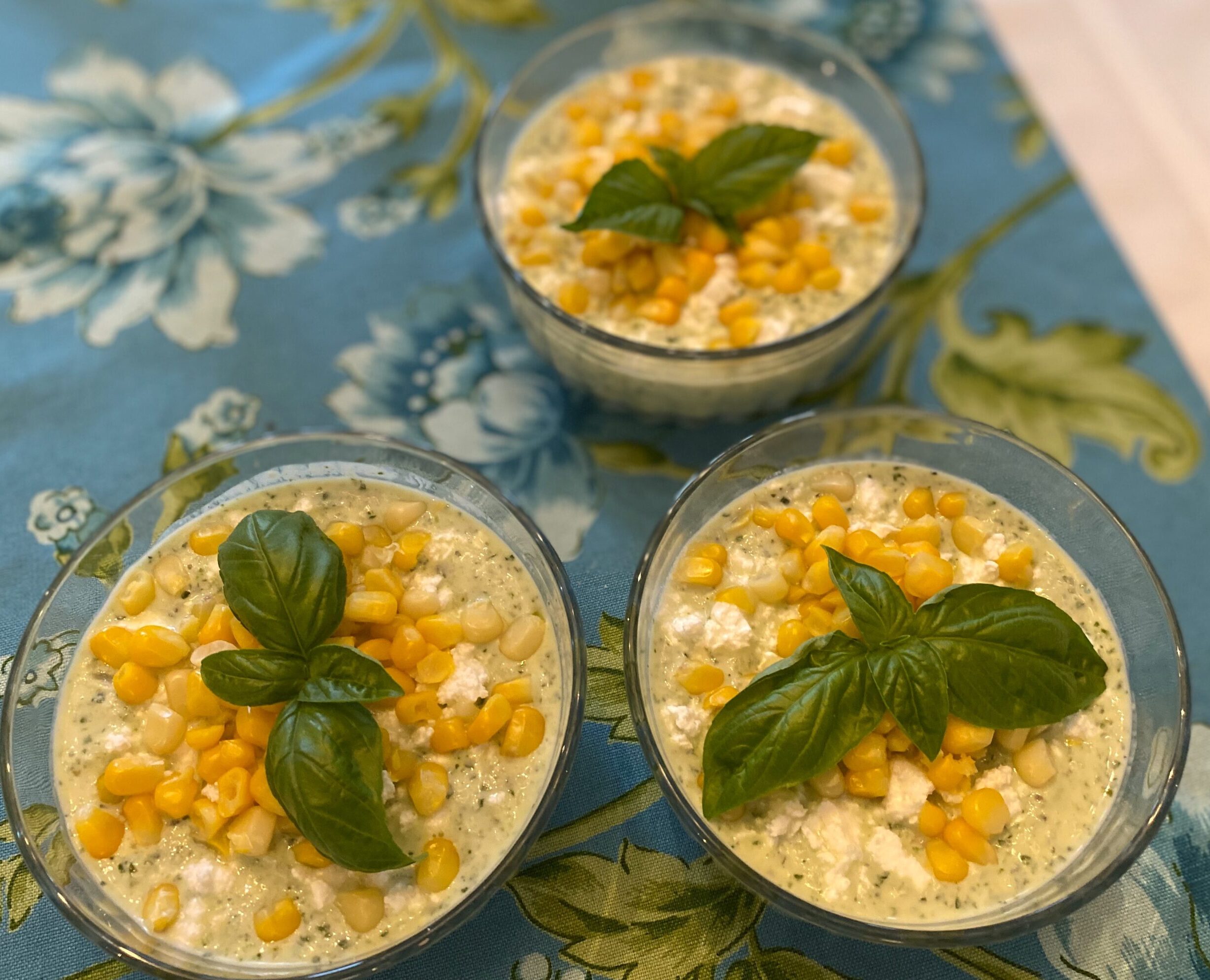
Notes
- You can use a microwave to cook the corn. Place one ear of corn, in its husk, in the microwave and cook for 3 minutes. Leave in the husk for another minute and then shuck it.


